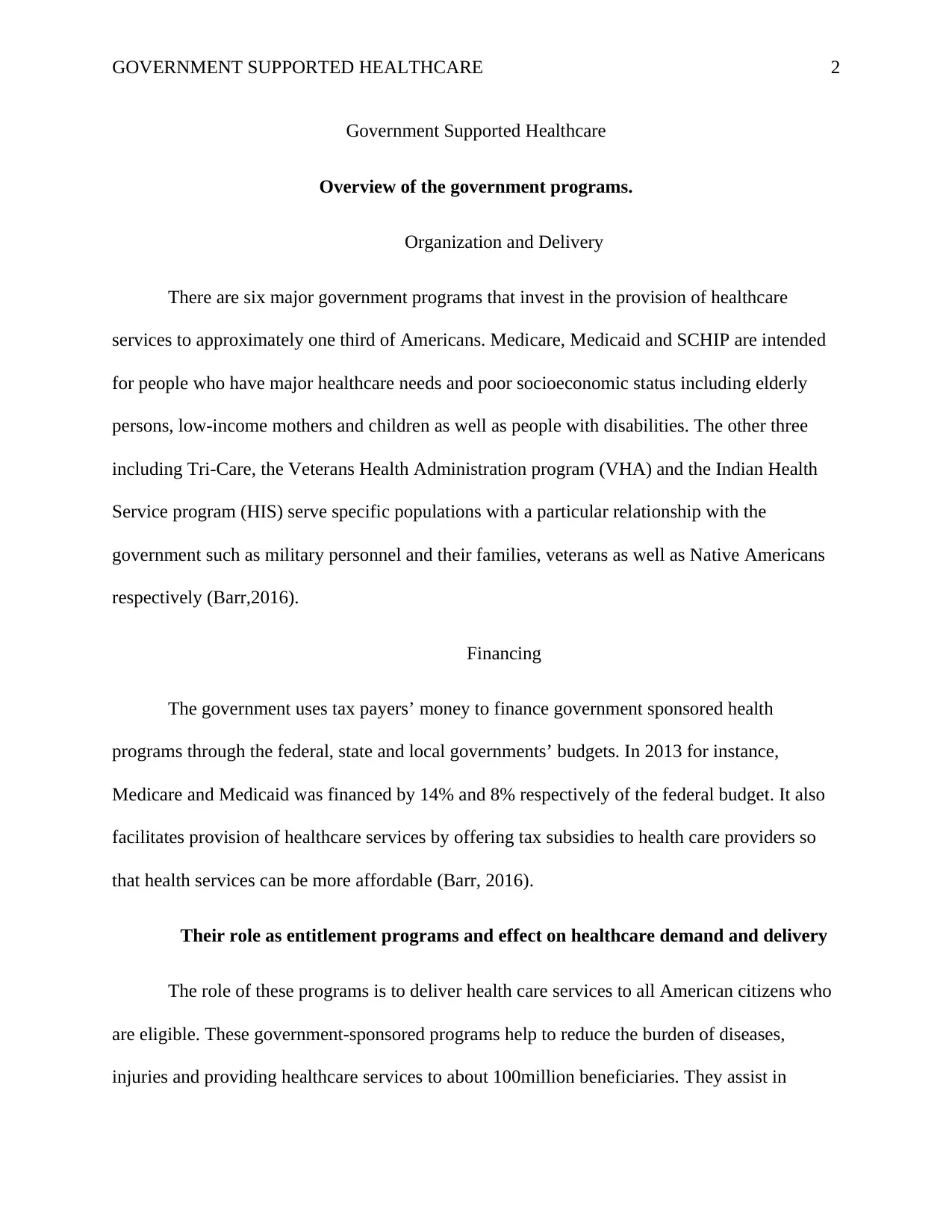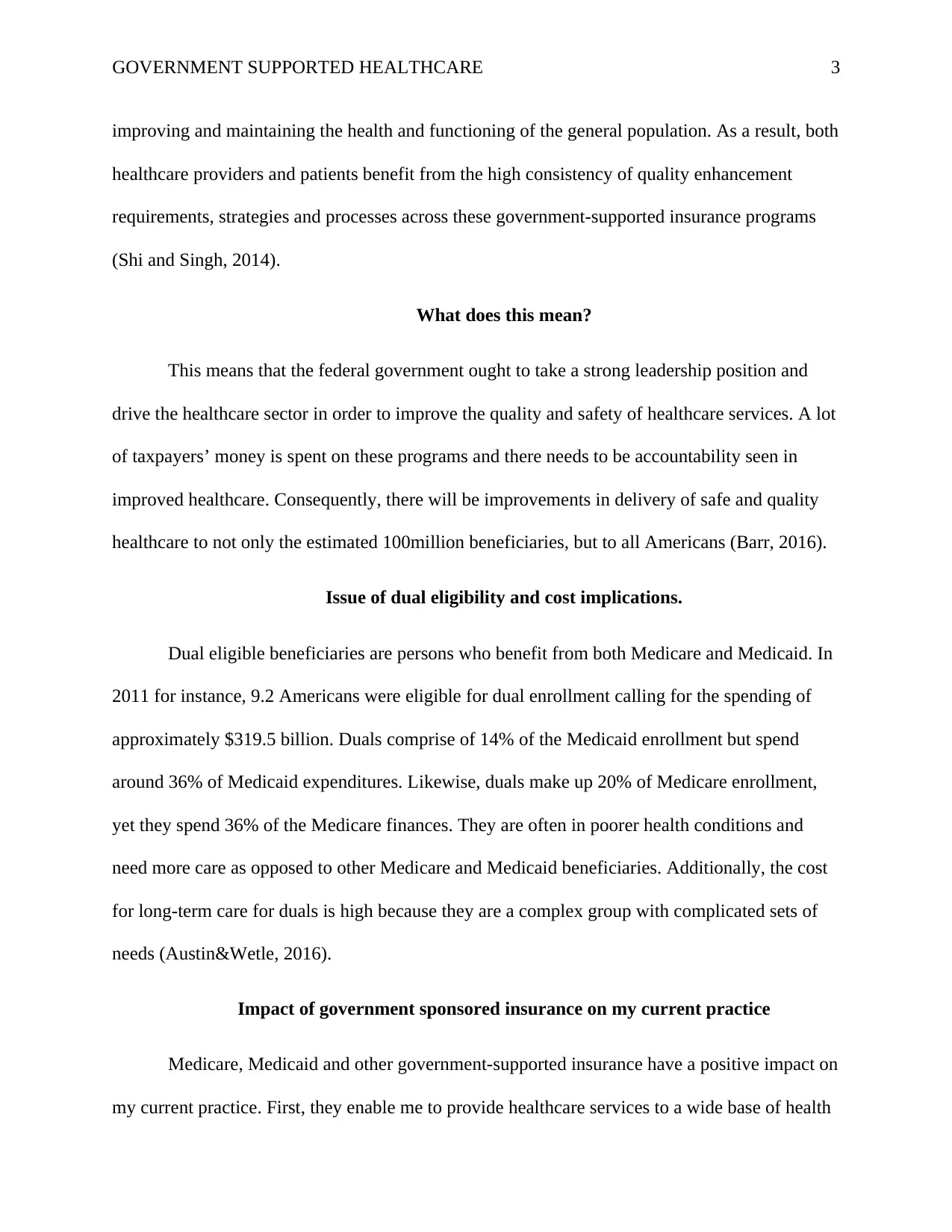Overview and Analysis of Government Supported Healthcare Programs
VerifiedAdded on 2019/10/31
|5
|697
|221
Report
AI Summary
This report provides an overview of government-supported healthcare programs in the United States, focusing on Medicare, Medicaid, and other initiatives like SCHIP, Tri-Care, VHA, and the Indian Health Service. It examines the organization, financing, and delivery of these programs, highlighting their role in providing healthcare services to a significant portion of the American population. The report discusses how these programs are financed through taxpayer money and tax subsidies, and their impact on healthcare demand and delivery. The report also addresses the issue of dual eligibility, where individuals benefit from both Medicare and Medicaid, and the associated cost implications. Furthermore, the report explores the positive impact of government-sponsored insurance on healthcare practice, particularly in enabling access to care for a wider base of consumers and facilitating the delivery of safe and quality care.
1 out of 5












![[object Object]](/_next/static/media/star-bottom.7253800d.svg)